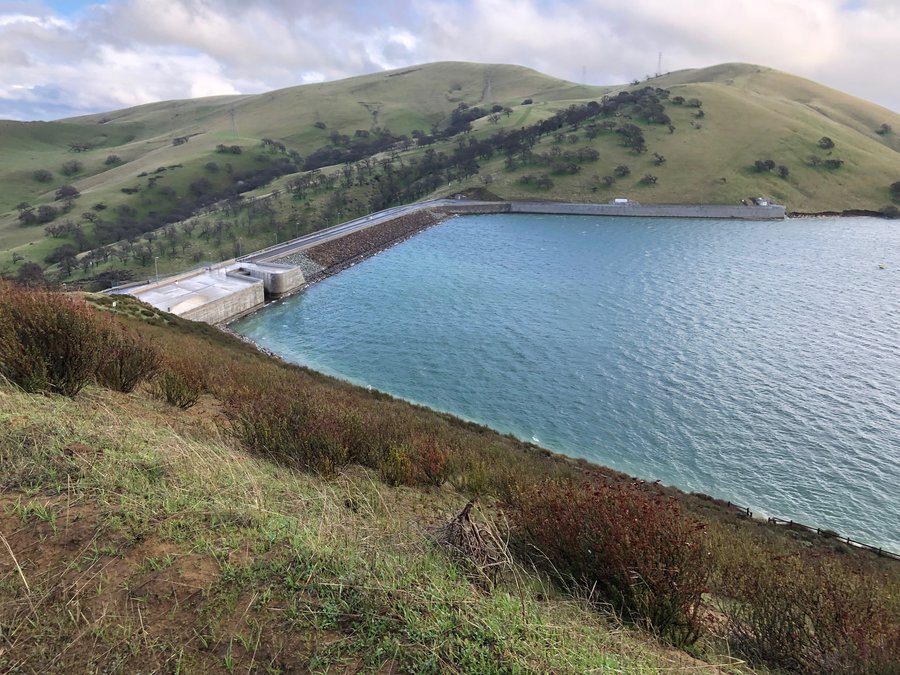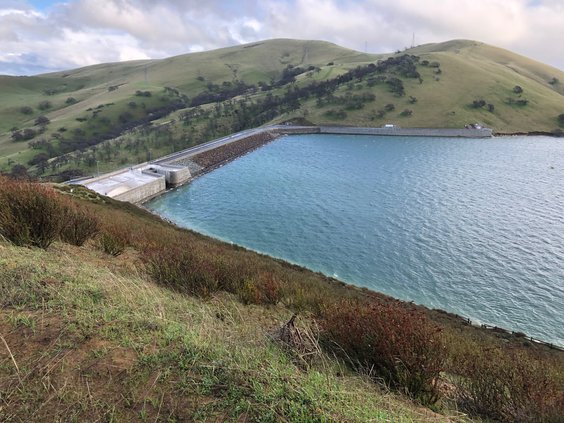Not a drop of new “moon shoot” water storage has been created in California for more than 40 years.
It’s a point that isn’t lost on Congressman Josh Harder.
Nor is the fact water issues facing the heart of the Northern San Joaquin Valley are interconnected with communities often hundreds of miles away from the 10th District that he represents in Congress
It is why the Turlock Democrat has pursued do-able water projects — including those outside of his district that would reduce efforts to try and commandeer water from the Stanislaus and Tuolumne watersheds to address fish flow, urban, and irrigation needs elsewhere — since taking office in 2019.
On Wednesday, his efforts paid off with the announcement he was able to secure $65 million in recommended funding for two water storage endeavors.
Secretary of the Interior Deb Haaland is recommending the Water Improvements for the Nation (WIIN) Act surface storage projects include $15 million for the Del Puerto Canyon Reservoir west of Patterson and $50 million for the Los Vaqueros Reservoir expansion north of Livermore.
Del Puerto project would
create 85,000 acre feet
of off-stream storage
Del Puerto Canyon would create 85,000 acre feet of off-stream storage for the Del Puerto Water District.
If the reservoir had been in place before the current drought hit and filled with rainfall from above normal years, Harder noted thousands of acres in the Patterson-Newman area would not need to be fallowed due to the lack of water deliveries from the Central Valley Project.
The lack of water — based on the last drought that ended in 2019 — put 30 percent of the agricultural workforce out of work
The money to raise Los Vaqueros Reservoir — 40 miles northeast from Manteca as the crow flies — by 55 feet would expand that off-stream reservoir from 160,000 acre feet to 275,000 acre feet.
That indirectly will have a positive impact on the Northern San Joaquin Valley.
“(California has an) interconnected water system,” Harder noted. “More water in one place means more water elsewhere.”
A case in point is the proposed Sites Reservoir in western Colusa County that Harder secured $4 million for last year to keep that project that would create 1.8 million acre feet of storage moving forward.
Had Sites been in place and filled with excess water from wet years, it could have been tapped this year to supplant Delta fish flows from Shasta Dam.
Sites could have avoided
Bureau taking water from
New Melones for Delta flows
The Bureau of Reclamation this year went outside of its operating agreement for New Melones Reservoir to use water from the Stanislaus River watershed to allow releases for Delta water quality from Shasta Dam to be reduced in a bid to conserve water. The state’s largest reservoir at 4.1 million acre feet is now at just 33 percent of capacity. That is 45 percent of average storage for the date of July 28.
That has put South San Joaquin Irrigation District and the Oakdale Irrigation District on guard. As SSJID General Manager Peter Rietkerk noted, there is a concern that if the Bureau continues to operate outside the agreement in coming years to replace Shasta’s mission to use Sacramento River water to maintain certain minimal water flows into the Delta with Stanislaus River water stored behind New Melones it could easily open the door to erode the districts’ historic adjudicated senior water rights.
Sites, while it includes some benefits for urban areas and farms, is primarily a reservoir that is designed to address fish and minimal water flow issues. That in turns takes pressure off stored water elsewhere such as behind Shasta and New Melones Dams.
Sites would operate just like the 2.1 million acre foot San Luis Reservoir west of Los Banos. It is an off-stream storage reservoir as well that is filled with excess runoff and winter rainfall and tapped into when water supplies start running low.
“We are all in this together,” Harder said of the drought and the need to find ways to stretch the water supply.
Harder noted the biggest problem is “we are depending on dams built by our fathers and grandfathers.”
The last major Central Valley Project reservoir — New Melones with 2.4 million acre feet of capacity — was completed in 1979 when California had 24.2 million residents. Oroville, the last major State Water Project reservoir with 3.5 million acre feet of capacity, was finished in 1969 when the state had 19.9 million residents. California today has 39.3 million residents.
Harder noted besides there not being any rivers left to dam to create a major reservoir, major dam expansions suggested for Shasta Dam on the Sacramento and Friant Dam on the San Joaquin are fraught with opposition and environmental issues.
Issue will be capture more
rain with smaller snowpack
More importantly, they are the wrong answer given California’s evolving hydrology with roots in natural drought cycles prior to what the science of dendrology has determined was an unusual wet stretch from the mid-18th century to the mid-20th century based on tree ring studies.
That, coupled with climate change, is starting a shift that will reduce the Sierra snowpack that is the de facto “largest reservoir” in the state. Much of that precipitation is expected to be transformed to rain in the coming years.
That would reduce the effectiveness of dams such as Shasta. Meanwhile increased rain runoff collected by rivers at the lower elevations would simply flow into the ocean. Off-stream storage reservoirs such as Del Puerto, Los Vaqueros, and Sites would be in a position to have that water diverted to them and stored for later use.
It underscores why Harder said he is working on the “80 percent of storage projects” that are smaller, off-stream and have significantly less environmental issues.
Harder said that it doesn’t mean giving up on the other 20 percent — raising Friant and Shasta dams. It’s just that endless energy invested in trying to move those projects forward as well as the years spent trying to get the Auburn Dam built on the American River has resulted in no additional storage being built in the past 40 years.
The congressman noted a holistic approach to water needs to include groundwater recharging, stepped up conservation, and allowing water transfers among other tools.
“The last major federal surface water storage project built in our state was in 1979, Harder noted. “Since then, we’ve doubled our population statewide and done things like invented the internet and ended the Cold War. It’s time our water storage system was made to keep up with the times. Securing $65 million for Central Valley water means more jobs for our workers, more crops for our farmers, and more water for our families. This is a huge investment in the future of our community and I’m proud we could make it happen.”
To contact Dennis Wyatt, email dwyatt@mantecabulletin.com





